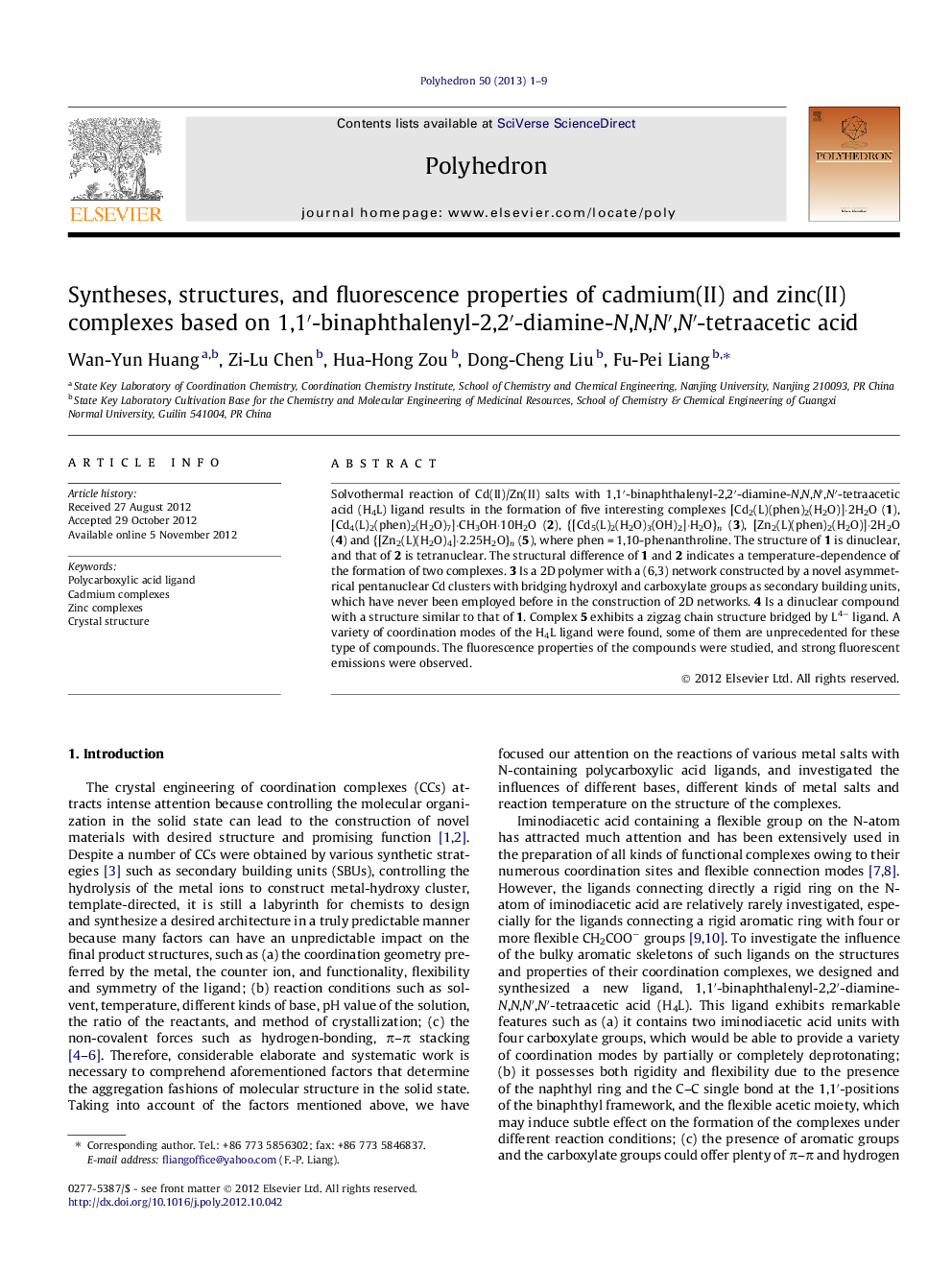| Article ID | Journal | Published Year | Pages | File Type |
|---|---|---|---|---|
| 1334614 | Polyhedron | 2013 | 9 Pages |
Solvothermal reaction of Cd(II)/Zn(II) salts with 1,1′-binaphthalenyl-2,2′-diamine-N,N,N′,N′-tetraacetic acid (H4L) ligand results in the formation of five interesting complexes [Cd2(L)(phen)2(H2O)]·2H2O (1), [Cd4(L)2(phen)2(H2O)7]·CH3OH·10H2O (2), {[Cd5(L)2(H2O)3(OH)2]·H2O}n (3), [Zn2(L)(phen)2(H2O)]·2H2O (4) and {[Zn2(L)(H2O)4]·2.25H2O}n (5), where phen = 1,10-phenanthroline. The structure of 1 is dinuclear, and that of 2 is tetranuclear. The structural difference of 1 and 2 indicates a temperature-dependence of the formation of two complexes. 3 Is a 2D polymer with a (6,3) network constructed by a novel asymmetrical pentanuclear Cd clusters with bridging hydroxyl and carboxylate groups as secondary building units, which have never been employed before in the construction of 2D networks. 4 Is a dinuclear compound with a structure similar to that of 1. Complex 5 exhibits a zigzag chain structure bridged by L4− ligand. A variety of coordination modes of the H4L ligand were found, some of them are unprecedented for these type of compounds. The fluorescence properties of the compounds were studied, and strong fluorescent emissions were observed.
Graphical abstractFive Cd(II) and Zn(II) complexes with a new polycarboxylic acid ligand were obtained. These complexes display various architectures from 0D to 2D and interesting fluorescence properties.Figure optionsDownload full-size imageDownload as PowerPoint slide
